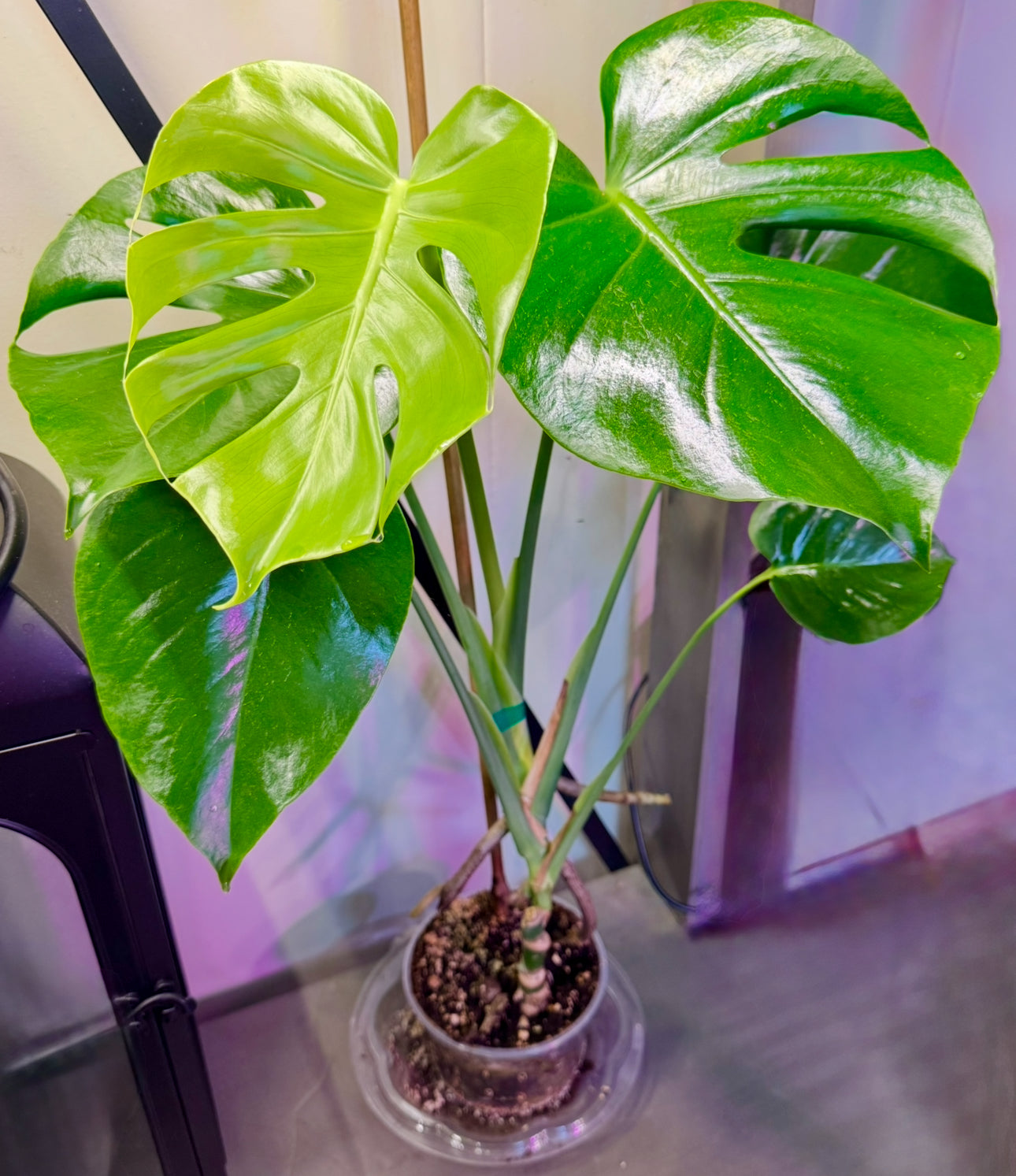Eden on Earth
16”-20” Monstera Deliciosa
16”-20” Monstera Deliciosa
Couldn't load pickup availability
The Ultimate Guide to Monstera Deliciosa Care
The Monstera deliciosa, often called the Swiss Cheese Plant, is an iconic and beloved houseplant, famous for its large, glossy, heart-shaped leaves that develop characteristic splits or holes (fenestrations) as they mature. It's a rewarding and relatively easy-to-care-for plant that can bring a bold, tropical feel to any space.
1. Understanding Your Plant
-
Scientific Name: Monstera deliciosa
-
Origin: Native to the tropical forests of southern Mexico and Central America. In its natural habitat, it's an epiphyte, meaning it grows on other trees, using its aerial roots to climb towards the light.
-
Growth Habit: It's a natural climber. In a home setting, its vining stems will sprawl unless given support. Providing a moss pole or trellis is key to encouraging upward growth and the development of large, fenestrated leaves.
2. Core Care Requirements
💡 Light
-
Ideal: Bright, indirect light for several hours a day. It can tolerate medium light, but it may grow more slowly and produce fewer fenestrations.
-
Too Much: Direct, intense sunlight will scorch the leaves, leaving burn marks. A few hours of gentle morning sun from an east-facing window is usually fine.
-
Too Little: In low light, the plant will produce smaller leaves without splits, and the stems may become leggy as they stretch towards a light source.
💧 Watering
-
When to Water: Water when the top 2-3 inches of soil are dry. Monsteras do not like to have "wet feet," so it's important to let them dry out partially between waterings.
-
How to Water: When you do water, do so thoroughly. Drench the soil until water runs freely from the drainage holes. Let it drain completely, then discard any water left in the saucer.
-
Frequency: This could be weekly or bi-weekly, depending on the light, temperature, and humidity of your home. Always check the soil first.
🌱 Soil
-
Perfect Mix: A peat-based potting mix that is chunky, airy, and well-draining is ideal.
-
DIY Option: Create a superior mix by combining:
-
1 part standard potting soil
-
1 part perlite or pumice
-
1 part orchid bark
-
A handful of horticultural charcoal (optional)
-
🌡️ Temperature & Humidity
-
Temperature: Prefers warm and stable temperatures between 65-85°F (18-29°C). Avoid cold drafts and sudden temperature fluctuations.
-
Humidity: Being a tropical plant, it thrives in high humidity (above 60%). While it can tolerate average household humidity, increasing it will lead to healthier growth. Consider using a humidifier, misting regularly, or placing it on a pebble tray.
3. Growth and Maintenance
🌿 Fertilizing
-
What to Use: A balanced liquid fertilizer for houseplants.
-
How Often: Feed every 4 weeks during the spring and summer. Dilute to half the recommended strength to avoid nutrient burn. Stop fertilizing in the fall and winter.
🧗♀️ Support and Aerial Roots
-
Support: Providing a moss pole, coir pole, or trellis is highly recommended. This mimics its natural climbing habit, provides stability, and encourages the growth of larger, more fenestrated leaves.
-
Aerial Roots: Your Monstera will produce long, brown roots from its stem. These are aerial roots, used for climbing and absorbing moisture from the air. You can gently guide these roots into the pot's soil or onto the moss pole. Do not cut them off unless they are dried and shriveled.
✂️ Pruning
-
Purpose: Prune to control size, remove yellow or damaged leaves, or to encourage a fuller shape.
-
How: Use clean, sharp shears. You can cut back stems to a node, and the cuttings are very easy to propagate in water or soil.
🪴 Repotting
-
Frequency: Repot every 1-2 years, or when it becomes significantly root-bound. A 12-inch Monstera is large; it will appreciate a soil refresh every spring.
-
Choosing a Pot: Move up to a pot that is 2-4 inches larger in diameter. Ensure it has excellent drainage.
4. Troubleshooting Common Issues
-
Yellowing Leaves: The most common culprit is overwatering.
-
Leaves with No Splits (Fenestrations): Usually means the plant is either too young or not receiving enough light.
-
Brown, Crispy Leaf Edges: Indicates low humidity or underwatering.
-
Pests: Inspect regularly for spider mites, mealybugs, and scale, especially on the undersides of leaves.
⚠️ A Note on Toxicity
-
Monstera deliciosa is toxic to cats and dogs. Ingesting it can cause severe oral irritation, drooling, and vomiting.


